![]()
Sunday, March 29, 2015 | By Rob Harris
This article is part 2 of an extended study of Irish news media on the Israeli-Arab conflict. You can read part 1 here and part 3 here.
This extended article features a selection of instances of substantive bias in reports and discussions on RTE’s television channels, through the latter half of 2014. It begins with the kidnapping and murder of three Jewish-Israeli teenagers, which led to a dramatic escalation in the Israeli/Jewish-Arab/Palestinian conflict, resulting in war. The examples represent just a fraction of RTE’s reportage on the conflict. Israel was also discussed in other RTE news reports, which are not as relevant because they focused on the evolving political situation in Israel’s internal politics, in a brief matter-of-fact manner, without significant opinion and analysis, elements which would be indicative of RTE’s broad political outlook.
While RTE’s lunchtime and six o’clock (called ‘6.1 News’, the broadcaster’s principle hour-long news show) news reports are mainly referenced, these reports were uniformly featured in rotation cycles on RTE’s ‘News Now’ channel, and usually featured in identical or near-identical form on other RTE news programmes. Please note that programme content contained in the links to RTE’s Internet Player is only available for limited periods of time. Some quotations are included.
Pat Rabbitte, former Minister for Communications, recently echoed a commonly held belief that RTE is a powerful force of support for political parties to the left. A related belief also exists that RTE has long been unduly supportive of pan-Arab/Arab-Palestinian positions relating to the Israel-Arab conflict. Whilst this issue is somewhat peripheral in the Irish political landscape, prejudicial coverage of the conflict may still have an impact on the parties involved, both at an international and local level. The welfare of the related Jewish minority living in Ireland may also become an issue, if trends in Western Europe are at all indicative.
Hamas’ 2014 Kidnap-Murder
Events in the region took a turn for the worse with the kidnapping and murder of three Israeli teens on June 12th 2014. Hamas would subsequently take credit for these murders. However, the terrorist group initially refused to confirm or deny their involvement. RTE falsely stated that Hamas denied any involvement in the kidnapping, and they continued to so in a consistent manner.
It seems to have taken RTE several weeks to revise its stance about Hamas’ claims, since it appears that a 6th of July lunchtime news report was the first to present an accurate account of Hamas’ response to the kidnapping. The amendment was first made in a two minute report, on the subject of the apparent beating of an Arab-Palestinian teenager with US nationality.
However, this particular lunchtime news report was problematic for other reasons. RTE featured an interview with the son’s mother but did not present a response from an Israeli perspective. RTE showed video purportedly of the beating, but failed to give anything but passing reference to the violence perpetuated by masked “protesters”, of which this US national was likely one, given that the confrontation took place during a serious riot.
RTE’s sequencing of the story was quite peculiar. The report of the beating came after the news bulletin’s 45 second headline story, concerning an interview with Irish government minister Richard Bruton. The report was followed by a 15 to 20 second segment on the death of 29 Kenyans in a serious terrorist incident, and a shorter mention of a major parachuting accident in Poland that led to 11 deaths.
RTE’s presentation of events in the conflict during this period are analysed in more depth in an article entitled “Obsession, Exclusion and Double Standards”.
The Gaza War
With the onset of Operation Protective Edge, at an early phase prior to the ground offensive, RTE featured a lunchtime news report, by journalist Nieve Nolan, detailing Israel’s increased air-strikes on targets in Gaza. There was no mention of rocket strikes until a brief statement by Israeli spokesman Mark Regev, even though Hamas’ increased rocket attacks the previous night were clearly the precursor for Israel’s intensified response.
Nolan justified the rocket attacks on Israeli towns as a response to the Jewish State’s killing of Hamas terrorists, who may have in fact died from handling explosives. Her claim is difficult to justify as the broad swathe of rocket strikes was initiated with the kidnap-murder of Jewish teenagers the previous month. Nolan’s view might be excused as an insufficient explanation of events but, at the end of the report, she states that Israel is set on a course of “escalation rather than de-escalation”, despite Netanyahu having acted with relative restraint, and voiced a reluctance to engage, until the dramatic increase of rocket attacks.
A detailed analysis and transcript of the report can be found in an article entitled “Problematic Media Coverage of Operation Protective Edge”. The article also discusses an RTE ‘News for the Deaf’ bulletin, which described Israeli’s as “militants”, perhaps to associate the IDF with terrorism.
An email of complaint was sent to RTE about the report on the 8th July. Fiona Mitchell, Deputy Foreign Editor, replied, via complaints@rte.ie, on the 14th of July. She stated:
“You mention use of the sentence “escalation rather than de-escalation’. This was the same day that the Israeli Prime Minister Benjamin Netanyahu announced that Israel had “significantly expanded our operations against Hamas and other terrorist organisations” making it clear that this was escalation rather than de-escalation, and making it a noteworthy news line.”
However, it appears that Netanyahu’s statement, which Fiona Mitchell quotes, appears to have been made after the Nolan’s report was broadcast. Netanyahu’s statement was issued in the evening of the 8th July. Even allowing for a two hour time difference with Israel, the statement was issued hours after the news segment was broadcast. Thus, it remains unclear what information RTE News was reacting to, which resulted in the ‘lead’ with this stance in the report.
Furthermore, Mitchell stripped the Netanyahu quotion of its context, in which he still indicated a reluctance to intensify action, noting that: “Israel is not eager for war, but the security of our citizens is our primary consideration.” This is notable because Nolan’s report fails to address the fact that Hamas made several blood-curdling announcements of its desire to intensify the war. The day before Nolan’s report, Hamas rejected Netayahu’s request for cessation, going as far as to claim that the group would engage in criminal behaviour by targeting Israeli civilians indiscriminately. Nolan’s report was thus highly selective, by ignoring the dark threats made by Hamas, whilst choosing to cast Israel as the aggressor.
Yet, an anti-Israel tone was occasionally absent at RTE News. Senior newscaster Brian Dobson interviewed the Palestinian ambassadorial representative to Ireland, Doctor Ahmad Abdelrazek, on 6.1 News, July 9th. Dobson was critical of Abdelrazek’s explanations for Hamas having initiated the war. Abdelrazek erroneously claimed the Iron Dome completely shields Israeli’s from Hamas rocket fire.
On the 22nd of July, RTE’s 6.1 featured a substantive amount of problematic coverage on the conflict. The 48 minute programme (excluding advertising) included over twelve minutes on the issue. Chris Gunness, of the UNRWA, gave a misleading account of events. Gunness’ selection as a guest, without an Israeli response, was problematic. Gunness has earned some notoriety for being deeply prejudicial. He supports incitement and sources that are supportive of terrorism.
RTE news presenter, Sharon Ní Bheoláin, pointedly interrupted Charlie Flanagan, Minister for Foreign Affairs, to state that Hamas claims not to have been party to Egypt’s cease-fire initiative. However, the claim was not credible, since Hamas had already rejected two prior cease-fire proposals by that stage:
“Now it should be said of course that Hamas say they were not party to those talks, and that was part of the reason they rejected the Egyptian solution as it were. Can I ask you, because time is against us Minister, what is the Irish position on aspects of this, and I am thinking the Blockade, for example, which very many people would say has contributed enormously to the suffering of the humanitarian [sic] people, and also what the Irish position is with regard to the settlements, and the expansion of those settlements?”
Notably, Ní Bheoláin presents an excuse for Hamas’ failure to agree a ceasefire, while pointedly inferring blame on Israeli policy for the war. She also prompted the minister to state that Israeli air strikes are human rights violations, citing a report by Human Rights Watch, an NGO with a noted hostility toward Israel. However, it was to be an assertion he would not make, since he did not wish to pre-empt investigations.
Beit Hanoun
A missile strike at a school in an area of Gaza called Beit Hanoun, led to the deaths of 15 to 17 Arab-Palestinians, believed to be civilian. At the time, international media coverage was particularly intensive. The rush to blame Israel was exceptional, in view of the fact that there was a significant amount of uncertainty over what transpired. Subsequently, little or no coverage was given to emerging reports and video footage that suggested Israel was not to blame. RTE’s coverage fitted this template.
On the 24th of July, RTE’s coverage of the conflict was as obsessive as it was of poor quality. Almost 16 minutes was devoted to the conflict on 6.1 News, with a mere 15 seconds of coverage provided for the 82+ civilians killed in a terrorist attack in Nigeria. Such selective coverage was part of a persistent pattern, where reports of terrorist attacks in similar regions was rarely more than minimal.
Paul Hirschson, a member of the Israeli foreign ministry, claimed in an interview for the programme, that Hamas more than likely were responsible for the strike that led to the deaths. Chris Gunness also admitted, on the same 6.1 show, that the UNRWA didn’t know the source of the attack. Gunness is a partisan anti-Israel guest, who also claimed that the IDF did not allow UNRWA to evacuate civilians from the school. In an uncommonly strong reaction, an IDF spokesperson said Gunness’ claim is a “flat-out complete and total lie.” Therefore, Gunness was unlikely to be forwarding an apologia when he claimed not to know the source of the attack on the school. Nonetheless, screen-text on RTE’s News channel appeared soon after the interviews, which recurrently stated (in two separate locations) that Israel was responsible for the strike on the school: “15 killed as Israel bombs UN school in Gaza”.
RTE included a lengthy interview with Doctor Mads Gilbert at the end of their 9 PM news programme. He was interviewed by news-presenter Kate Egan. Doctor Gilbert earned notoriety for being one of the first Westerners to justify the 9/11 terrorist attacks, despite the substantive targeting of civilian infrastructure. He has also acted as an apologist for Hamas. He co-authored a book of his time in Gaza, which was economical with the truth. As a far-left terrorism advocate, his selection for interview, to describe events during an ongoing conflict, was inappropriate, in view of the friendly unchallenging interview, with smiling news presenter who did not discuss his controversial activism, however briefly.
On Prime Time, RTE’s principle journalistic show, Claire Byrne, a presenter and interviewer, stated in the introduction that Israel admitted targeting the school. She presented a narrative, of Israel admitting it targeted the school but attempting to justify the strike.
However, a few minutes later, Byrne would deny having made the assertion, when an Israeli guest, Professor Dan Shiftan, subsequently challenged her about the accuracy of the claim. He rightly pointed out that Israel had admitted firing in the area as hostilities with Hamas took place, but noted that Israel also denied being responsible for the attack which caused the civilian deaths. Byrne strongly disagreed with what he said. However, her rebuttal was unconvincing. Her explanation appears to suggest that the RTE news editors thought Israel’s admission that it had fired in the area to combat Hamas, was the same as an admission that they intentionally fired on the school, resulting in fatalities. A transcript of the introduction, and their subsequent argument, is featured in the Appendix to this article. More favourably, Byrne did appear to genuinely entertain Shiftan’s comments concerning Hamas’ conduct.
Prime Time’s accompanying news report, by journalist Kevin Burns, blamed Israel for the continued violence. Burns stated at the start of the report that “Israel said it was trying to stop rockets”, to suggest another intent. He also spoke in a noticeably higher-pitched tone of voice, when stating that Netanyahu said he regretted the loss of civilian life, to possibly give Netanyahu’s claim an incredulous quality.
RTE did not issue clarification, after blaming Israel for the Beit Hanoun school strike, when the source was unknown. They would in fact intensify the claim latterly — see Paul O’Flynn’s October 12th report.
A question of figures
The 26th of July Lunchtime News report, authored by Michelle McCaughren, claimed the Palestinians used rocks and firecrackers during riots in Judea and Samaria/West Bank, while Israel responded with tear gas and live fire, after stating that an Arab-Palestinian teenager was shot dead. The veracity of this claim is doubtful because there would have been a considerable death toll if Israel substantively used live ammunition to suppress a riot, unless the live bullets were used in a highly selective fashion, but this is not how McCaughren’s David and Goliath narrative is presented.
The 28th of July Lunchtime News report, by Joan O’Sullivan, claimed that Israel didn’t dispute the death toll of over a thousand Arab-Palestinians killed in the then-present war, before focusing on the apparent scale of Arab-Palestinian civilian deaths. Her assertion appeared to suggest that Israel had endorsed or not contested the Hamas health ministry/UNRWA/PCHR (Palestinian Center for Human Rights) NGO claims, which assert that three quarters of those killed are civilian. Such a claim is misleading because Israel asserted that it believed that half or more of those killed were engaged in belligerency, which was borne out by detailed analysis of the affiliations of the individuals killed. It is often difficult to distinguish between militant and civilian fatalities, and Israel tends not to issue or endorse death tolls until studies are carried out.
In the past, Hamas-based studies were the basis for statistics from the UN and a variety of anti-Israel NGOs. In the last major Gaza war of 2009, Hamas was forced to correct its statistics due to political expediency. Death tolls derived from Hamas’ health ministry are thus unreliable.
War’s Aftermath
Christopher McKevitt’s 1st of September Lunchtime news report, focused on the transfer of land in Judea and Samaria/West Bank into state ownership. It failed to note that the site was the location of the kidnapping of the three Israeli teens, and while his report mentions that the murders were a stated reason for the State action, he casts doubt upon the claim because that purpose wasn’t mentioned in a sign at the site! McKevitt presents the transfer as a theft of Arab land. The report header states “US urges Israel to reverse a decision to take Palestinian land in West Bank”. It would emerge however that the site went through a lengthy legal process to determine its ownership. It was declared to be state land when none was found.
Paul O’Flynn’s October 12th Lunchtime News report discussed financial assistance for Gaza’s repair. O’Flynn also describes the war that Hamas initiated, as a “bombardment”. The news presenter, when introducing the report, also spoke of an “Israeli military bombardment”. Israel is presented as the only group reluctant to assist Gaza. However, various donors are worried about such funds going to Hamas, which would facilitate the financing of a new war, as on prior occasions. Oddly however, the word “Hamas” is not found anywhere in the two-minute report.
The journalist claimed that 30 Arab-Palestinians were killed by an Israeli rocket at the Beit Hanoun school during the recent conflict:
“This school in Beit Hanoun was hit by an Israeli rocket during the summer, and 30 people died.”
There is in fact robust evidence to suggest that Israel was not responsible for the strike that killed the civilians at the UN school in Beit Hanoun. As previously mentioned, this evidence was not widely discussed in the aftermath of the intense mainstream media condemnation. There was also little mention of reports that the UNRWA acknowledged that a Hamas rocket hit the school. However, with the benefit of hindsight, after the initial and misguided rush to judgement, O’Flynn’s blame, focusing on an “Israeli rocket” to the exclusion of all other opinion and compelling evidence, is a rather serious ethical breach. The death-toll also appears to be inflated, from approximately 15 to 30, seemingly without justification.
Incitement and Intifada
Christopher McKevitt’s 6.1 news report, on the 18th of November, addressed the terrorist attack on a synagogue in Jerusalem, resulting in the murder of five.
Mckevitt stated that Palestinian Authority president…
“Mahmoud Abbas did condemn the killings but in the same breath criticised the recent Israeli assault on the al Asqa Mosque on the Temple Mount, a site venerated in both Judaism and Islam.”
Mahmoud Abbas, like Arab-Palestinian leaders before him, has repeatedly claimed that Israel is taking possession of the al Asqa mosque, to stoke intensive violence. However McKevitt failed to provide any clarification or qualification that “Israel’s assault on the al Asqa Mosque” was a particular truth claim that Abbas was advancing. McKevitt’s assertion tacitly justified the attack, by pointing to supposedly provocative actions on the part of the side so attacked. The PA president condemning a terrorist attack, whilst echoing the very sentiments that gave rise to such violence at the time, was indeed a terrible irony, and surely merited some comment concerning his role of inciting violence.
An RTE article ‘Fifth person dies after Jerusalem synagogue attack’, published the same day, undermined Netanyahu’s claims regarding Abbas’ incitement. It failed to mention Abbas echoed the very inciteable claims in his “condemnation”.
McKevitt’s report noted that the dispute was over access rights to the Temple Mount. However, he fails to mention that the issue is in fact over the access rights of one group — Jews, who at the time were campaigning for the right to worship on the Mount, which is their holiest religious site.
McKevitt asserted that twelve Arab-Palestinians had died versus seven Israeli’s. To his credit, he said that some of those Arab-Palestinians were the instigators of homicidal acts. However, he failed to mention that the others were involved in violent Intifada-like protests at the time (except for a man who committed suicide) so it is rather misleading to draw equivalences to innocents murdered by terrorists, whilst praying in a synagogue or waiting at a bus or train stop.
Simplified narratives
Paul O’Flynn’s 6.1 News report, of the 10th of December, on the death of PA minister Ziad Abu Ein, appears latterly in the news programme, despite being announced as an upcoming story in the first part of the show. Presenter Sharon ní Bheoláin misleadingly suggested that he died when he was hand-grabbed by an Israeli soldier, when in fact he died subsequently, for reasons that are disputed. Secondly, O’Flynn’s report features a lengthy comment by PA minister Hanan Ashwari, in which she not only calls it an act of murder, but claims Israel killed thousands of other Arab-Palestinians “in cold blood”. There was no corresponding response from any Israeli official, other than O’Flynn noting that both sides disputed the events.
In an article published on the 31st of December, RTE claims Israel committed war crimes in the “occupied territories” without qualifying that the claim is the position of one side, or with the citing of any source, however prejudicial:
“Palestinian president Mahmoud Abbas is to apply immediately to join the International Criminal Court, senior officials said, after the UN Security Council rejected a resolution on ending the Israeli occupation.
Mr Abbas will sign the Rome Statute, adhering to the founding treaty of the ICC, where the Palestinians could sue Israeli officials for war crimes in the occupied territories.”
Reports by United Nations bodies have levelled the war crimes charge at Israel’s door but all have been contested. For example, the Goldstone Report was demonstrated by numerous sources to possess strong evidential problems responses, and convincing charges of bias in its analysis.
Irish pro-Israel advocacy group, Irish4Israel, noted RTE’s continuing fascination with the story into the New Year, whilst failing to give the Israeli perspective much voice, nor address the fact that the PA may be vulnerable to charges as well.
End of year news roundups
News channels, the world over, like to fill their end of year schedules with news coverage of the year then coming to an end. This programming can at times be edifying, but for the most part comes across as the rehashing of old news stories. Occasionally it can also provide an indicator of certain biases because the partial selection and coverage of stories can constitute a glimpse of what the news-editors value.
RTE’s run-down of what it feels were the most newsworthy stories of the year, entitled “2014 Year In Review” published on the 30th of December 2014, used some problematic language in the two featured stores on Israel, the first of which addressed the death of former Israeli Prime Minister, Ariel Sharon.
The piece features an inaccuracy with respect to Sharon’s military record. It states: “He left major historical footprints on the Middle East through military invasion, Jewish settlement-building on occupied land the Palestinians seek for a state”.
Casting his role as one of acting in military invasions, ignores some of the most notable events of his military career as being in the defence of Israel, with particular respect to his defining role in the 1973 Yom Kippur war. Even the 1982 invasion of Lebanon, for which Sharon’s reputation was tarnished, can be deemed a defensive act, after persistent PLO incursions.
‘RTÉ’s Error-Laden Coverage of Ariel Sharon’s Death’ offers a detailed analysis of their prior coverage.
With respect to the 2014 Gaza war, ‘Operation Protective Edge’, the broadcaster states:
“By the end of the 50-day conflict, more than 2,100 Palestinians, most of them civilians, have been killed. Sixty-seven Israeli soldiers and six civilians in Israel were killed by Hamas rockets and attacks.
UN Secretary General Ban Ki-moon later said the destruction in Gaza was “beyond description”.”
RTE accepted the UN’s death toll figures, without mention that Israel disputes these figures for good reason, since they are derived from Hamas’ health ministry, which has a record of forwarding tolls that grossly distort civilian death rates. The Meir Amit Terrorism and Information Center has been investigating the identities of casualties since the early stages of the war. In a succession of seven reports, it has so far examined 1,165 individual Gazan fatalities. It found 52% of deaths are linked with terrorist groups.
By contrast, the RTE review featured nothing about the Syrian civil war, other than with respect to the emergent terrorist group ‘Islamic State’. The death toll of the civil war had by then exceeded 200,000 in just over three and a half years, in what began as an Arab Spring protest, transitioning into an organised anti-Assad insurgency by Summer 2011. Yet all the reader gets is a sub-section entitled “The rise of the Islamic State group”, which does not directly reference the civil war.
RTE’s one-hour special on 2014 in review (first broadcast on RTE One, 31st December 2014), reflected similar biases with respect to the Gaza war, whilst failing to discuss the Syrian civil war.
Presenting a pro-Palestinian alternative
When accused of bias, many media outlets claim to have received accusations of bias from both sides in a given issue. Therefore, they argue that they cannot be biased. Such a stance may be deemed to be a fallacy because the argument does not measure the broad veracity of the complaints from each side.
Accusations of bias can of course be motivated by a dislike for the expression of stories that do not suit a person’s own narrative on an issue, so the veracity of these criticisms has be measured, in terms of accuracy and balance. This point is exemplified by the biggest controversy over RTÉ’s coverage of the Gaza war, where Irish anti-Israel groups organised an online petition, to object to a supposed misinterpretation of what an Arab-Palestinian woman stated. The charge was difficult to justify because the broadcaster did not present her comments as being a direct translation.
Rob Harris contributes articles to several websites on contentious political issues (not to be confused with the popular English novelist (1957-) of the same name). He blogs at eirael.blogspot.com. He lives in Ireland. For all the exclusive blog entries by Rob Harris, go here.
![]()
Appendix
On 24th July 2014, RTE television programme ‘Prime Time’, featured a segment where Claire Byrne, the presenter and interviewer, suggested that Israel admitted targeting a school in a northern district of Gaza, called Beit Hanoun. However, she would deny making the assertion to an Israeli guest, Professor Dan Shiftan.
Claire Byrne’s introduction to the segment conflated the targeting of the area with targeting the school:
“Israel has admitted tonight that it targeted an area in Gaza where 15 people were killed, when a UN school was hit earlier today. Hundreds more were injured in the attack on the school, which was being used as a shelter for civilians during fighting in the Middle East. But Israel says that Hamas is to blame, claiming that it prevented civilians from leaving the school, which was being used as a cover to launch rocket attacks.”
Later in the segment, Shiftan disputed Byrne’s claim that Israel admitted “targeting” the school.
Byrne replied: “I want to be very clear what we did say, and what the Israeli Defence Forces said on their official blog. They say that Hamas continued firing from Beit Hanoun. This is the IDF, which is where the shelter is located. The IDF, the Israel Defence Forces, they say, responded by targeting the source of the fire. So they are saying that they did target that area.”
Shiftan: “No, no. The source of the fire. Not the school. The source of the fire. Not the school. You said Israel targeted the school.”
Byrne interjecting: “No we didn’t, no we didn’t. We very very clearly and very deliberately said that they targeted the source of the fire. We did not suggest that they targeted the school because we’ve said exactly what the IDF said.”
Shiftan: “Ok, no you didn’t but we can come to that later. The important thing is that we don’t know yet if these casualties came from Hamas rockets that fell. About 20%, somewhat less than 20% of the rockets Hamas is launching, vis-à-vis Israel, are falling inside the Gaza Strip.”



 RSS
RSS

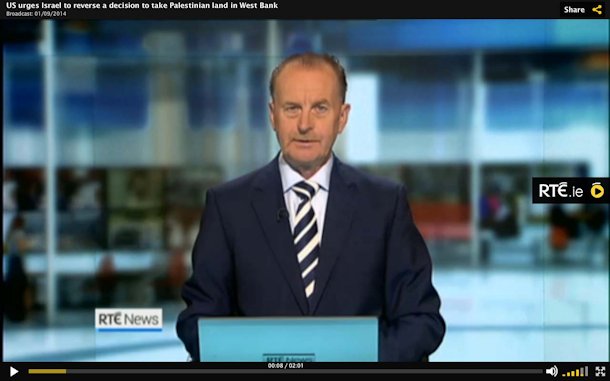

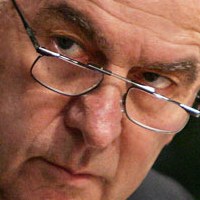
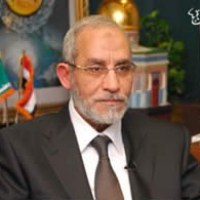
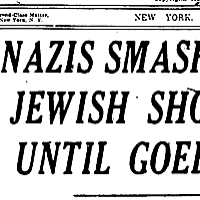
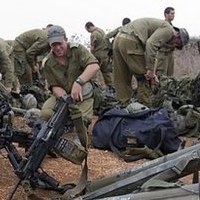




Latest Comments
Hello Mike, Thank you for your positive feedback to the article. I felt there wasn’t too much critical analysis of ...
Thanks for this considered and well constructed article. A follow up article on the manner in which the editorial contro...
THE CLUELESSNESS OF CLAIMING THAT OBAMA'S MIDDLE EAST POLICIES WERE A FAILURE CANNOT BE FURTHER FROM THE TRUTH, WHAT THE...
As long as Obama is the president of the usa do not trust the us government......
Thank you for an good read....